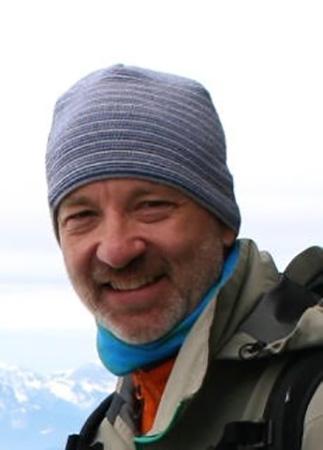
Cary Forest, University of Wisconsin-Madison
Cary Forest
University of Wisconsin-Madison
Friday, December 4, 2015
3:00pm
ABSTRACT
The Wisconsin Plasma Astrophysics Laboratory (WiPAL) is a flexible experimental facility designed to study a range of astrophysically relevant plasma processes as well as novel geometries which mimic astrophysical systems, in a controlled laboratory environment. A multi-cusp magnetic bucket constructed from strong samarium cobalt permanent magnets now confines a fully ionized, magnetic-field free plasma in a spherical geometry. It provides an ideal testbed for a range of astrophysical experiments including experiments on self-exciting dynamos, collisionless magnetic reconnection, angular momentum transport and plasma wind generation. This talk will give an overview of the theoretical motivation for the experiment, describe the device and it’s plasma properties, and then show the how the experiment is now being stirred, with geometries suitable for dynamos.
BIO
Dr. Cary B Forest received a Bachelor of Science degree from the University of Wisconsin in 1982 in the Applied Math, Engineering and Physics program. He received a Magnetic Fusion Energy Science Fellowship from the DoE to attend graduate school at Princeton University where he received a Ph.D. in 1992 in the Astrophysical Sciences department. His thesis, supervised by Dr. Masayuki Ono at the Princeton Plasma Physics Laboratory, received the Simon Ramo Award for Outstanding Doctoral Thesis Research in Plasma Physics from the APS. In the course of his thesis work he invented and demonstrated a non-inductive method of tokamak formation based upon the bootstrap current. After graduate school he spent 5 years working at General Atomics as a Scientist where his work focused on studies of plasma resistivity, non-inductive current drive, rf heating of plasmas and MHD instabilities in tokamak plasmas. The analysis technique Forest developed during this time for measuring the non-inductive currents driven in tokamaks has since been implemented in most of the world's large tokamaks and played a central role in validating the heating and current drive models being used to predict their behavior on ITER. At the UW, Forest has received the Romnes Fellowship, the Vilas Associate Award and the Kellett Mid Career Award. Nationally, he is the recipient of the Alfred P. Sloan Fellowship, the David and Lucille Packard Foundation Fellowship, and a Research Award from the Alexander von Humboldt Foundation. He has served as Director of the NSF Physics Frontier Center for Magnetic Self-Organization. He is a fellow of the American Physical Society.